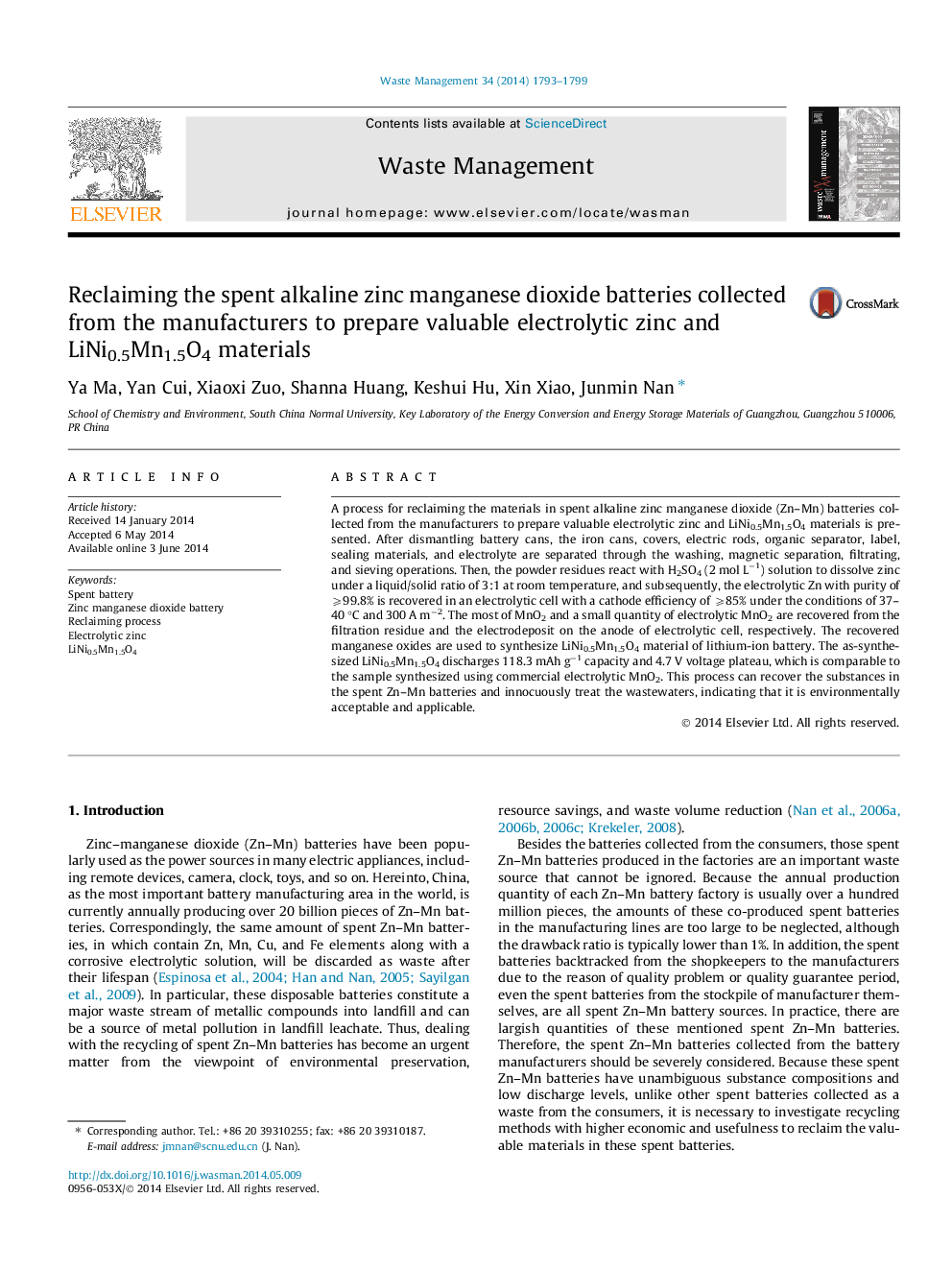| Article ID | Journal | Published Year | Pages | File Type |
|---|---|---|---|---|
| 4471520 | Waste Management | 2014 | 7 Pages |
•The spent Zn–Mn batteries collected from manufacturers is the target waste.•A facile reclaiming process is presented.•The zinc is reclaimed to valuable electrolytic zinc by electrodepositing method.•The manganese elements are to produce valuable LiNi0.5Mn1.5O4 battery material.•The reclamation process features environmental friendliness and saving resource.
A process for reclaiming the materials in spent alkaline zinc manganese dioxide (Zn–Mn) batteries collected from the manufacturers to prepare valuable electrolytic zinc and LiNi0.5Mn1.5O4 materials is presented. After dismantling battery cans, the iron cans, covers, electric rods, organic separator, label, sealing materials, and electrolyte are separated through the washing, magnetic separation, filtrating, and sieving operations. Then, the powder residues react with H2SO4 (2 mol L−1) solution to dissolve zinc under a liquid/solid ratio of 3:1 at room temperature, and subsequently, the electrolytic Zn with purity of ⩾99.8% is recovered in an electrolytic cell with a cathode efficiency of ⩾85% under the conditions of 37–40 °C and 300 A m−2. The most of MnO2 and a small quantity of electrolytic MnO2 are recovered from the filtration residue and the electrodeposit on the anode of electrolytic cell, respectively. The recovered manganese oxides are used to synthesize LiNi0.5Mn1.5O4 material of lithium-ion battery. The as-synthesized LiNi0.5Mn1.5O4 discharges 118.3 mAh g−1 capacity and 4.7 V voltage plateau, which is comparable to the sample synthesized using commercial electrolytic MnO2. This process can recover the substances in the spent Zn–Mn batteries and innocuously treat the wastewaters, indicating that it is environmentally acceptable and applicable.
